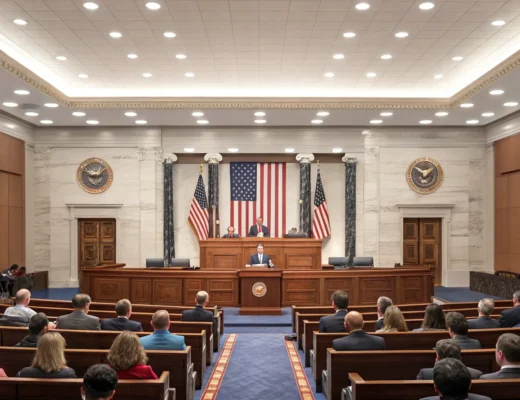A national regulator signaled it could have new plans in place by the end of January, but warned households not to expect lower costs. The announcement sets a clear timeline while tempering hopes for quick relief on total bills. The regulator said the measures aim to stabilize charges and improve clarity for customers, even as wider cost pressures persist.
The regulator’s plans could be in place by the end of January, but it warns total bills won’t fall.
What Is Changing and When
The regulator laid out a target to implement its plans before February. The timeline suggests consultations and final decisions are in the last stages. The move appears designed to give suppliers and customers a set of rules to carry them through late winter, when usage often peaks.
While the details were not fully disclosed, the approach points to adjustments in how costs are recovered and how charges are presented. The regulator emphasized an orderly transition, giving the market time to adapt while maintaining service reliability.
Why Bills May Not Drop
The warning on bills reflects ongoing pressures across the system. Wholesale costs can shift quickly, and long-term contracts may still carry higher prices from previous spikes. Network maintenance and upgrades, which are needed to keep services stable, also add to the total.
Suppliers have faced rising bad debt and customer support costs. Those expenses often feed into standing charges or unit prices. Policy changes and levies can also move charges even when market prices ease.
Impact on Households
Households looking for relief will likely see steadier pricing rather than a cut. The regulator’s plan appears to focus on predictability and fairness in how costs are shared. For many families, the key issue is budgeting and avoiding sudden jumps.
Advocacy groups are expected to press for
targeted help for low‑income customers and those in arrears.
Clearer billing and early notice of changes can help people plan, even if the headline number stays high.
Industry Outlook and Reactions
Suppliers want rules that reduce volatility and limit the risk of sudden losses. A stable framework can help them buy energy or other services in a measured way. That, in turn, supports continuity for customers.
Analysts say that even modest improvements in predictability can reduce costs over time. But they also caution that structural pressures remain. If input costs stay elevated, total bills are unlikely to fall quickly.
- Short-term: greater pricing stability, limited change to totals.
- Medium-term: potential easing if input costs decline.
- Long-term: investment and efficiency gains could lower pressure.
What Consumers Can Do Now
Consumers can review usage, check for efficiency steps, and see if fixed deals or support programs fit their needs. Simple actions like adjusting thermostat settings, sealing drafts, and comparing tariffs can make a difference. Households should also track notices from their supplier ahead of the late‑January timeline.
For those struggling, early contact with providers can open options such as payment plans. Independent advice groups can help with budgeting and benefits checks that may reduce pressure.
What to Watch Next
The key milestone is the end of January. The final shape of the plans will show how the regulator balances stability, investment, and fairness. Stakeholders will watch for changes to standing charges, seasonal adjustments, or rules on how suppliers recover costs.
Progress will also depend on broader market conditions. If input costs ease and demand normalizes, pressure on bills could improve later. If not, the focus will shift to targeted support and efficiency measures.
The regulator has set expectations: change is coming fast, but not in the form of cheaper totals. The next few weeks will reveal the final rulebook. For now, households should prepare for steady, not lower, bills and look for practical steps to manage costs. The bigger test will be whether stability now can set the stage for fairer, more affordable charges later in the year.







